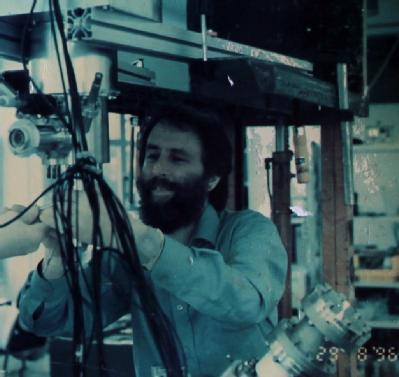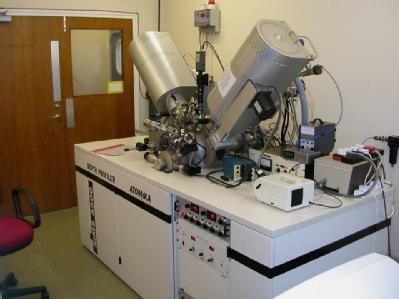The Floating Ion Gun, SIMS and the development of computer chips
|
The floating low energy ion gun (FLIG) [1-4] was invented by Professor Mark Dowsett in 1993, in the Department of Physics at the University of Warwick. It is now a key analytical instrument in a wide range of generic semi-conductor device and other technologies such as DRAMs, quantum wells (e.g. for GaN LEDs), SiGe and high- and low- k dielectrics. The FLIG is used in a technique called secondary ion mass spectroscopy (SIMS), whereby a sample of a material such as a semiconductor is hit with ions from the FLIG to progressively remove and drill down through the layers of the semiconductor. In this way, a very accurate view of the depth profile of the semiconductor is obtained, both in terms of the type of material and the thickness of each layer. These properties determine the performance of semiconductor chips and SIMS measurements have played a crucial role in helping to develop modern semiconductor devices from LED technology through to the microprocessors in your computer. |
The inventor, Professor Mark Dowsett working on a commercial prototype floating low energy ion gun (FLIG) at Atomika Instruments GmbH (now Ametek) in Munich, circa 1996. |
|
One of the first FLIG-equipped SIMS depth profiling instruments developed in collaboration with Atomika, in Mark Dowsett's analytical laboratory at Warwick. |
Intel and its competitors have used the FLIG in the development of specific technologies such as the Pentium® and Xeon® processors. Its impact extends beyond industry to consumers worldwide because the FLIG has played a key role in the development of multicore processors in personal computers, intense low energy lighting in automotive and civil engineering, mobile telecommunications technology and many other areas of advanced electronics. Discoveries made with the FLIG, such as a universal function [5] describing the depth resolution in SIMS, are now applied in other fields such as the analysis of organic multilayer structures [6]. and recent work at energies below 100 eV show that the device can access the chemistry in new challenge areas in the top 5 nm of a device [7]. |
Professor Dowsett retired from Warwick in 2014, but he is still actively researching in the field and can be contacted through his Warwick email address.
The developments described above were captured in an impact case study for the UK Universities government led Research Excellence Framework assessment process in 2014 (REF2014) and can be downloaded from here.
References
1. M. G. Dowsett, N. S. Smith, R. Bridgeland, D. Richards, A.C. Lovejoy and P. Pedrick, An ultra-low energy ion column for sputter profiling. in Secondary Ion Mass Spectrometry ,Secondary Ion Mass Spectrometry (SIMS X), eds A. Benninghoven, B. Hagenhoff and H. W. Werner, John Wiley and Sons (Chichester 1996) 367
2 N. S. Smith, M. G. Dowsett, B. McGregor and P. Phillips, Rapid low energy depth profiling using SIMS. in Secondary Ion Mass Spectrometry, op-cit, 363
3. G. A. Cooke, N. S. Smith, M. G. Dowsett, H. R. G. Burke and P. J. Phillips, Ultra low energy SIMS depth profiling and the dilute limit. in Secondary Ion Mass Spectrometry op-cit, 371
4. N.S. Smith, Ultra low energy SIMS depth profiling, PhD Thesis, University of Warwick (1996)
5. M.G.Dowsett, G. Rowlands, P. N. Allen and R. D. Barlow, An analytic form for the SIMS response function measured from ultra-thin impurity layers, Suf. Interface Anal. 21 (1994) 310-315
6. M. G. Dowsett, The development of a sub-keV ion column, 1990-1993, £38 225 (Title and dates are approximate)
7. M. G. Dowsett,J. L. Maul, Secondary ion mass spectrometer with aperture mask US 6080986 (2000) and J. L. Maul, M. G. Dowsett, Sample Analysis Method EP 0878827 (1998) / US 6078045 (2000)


